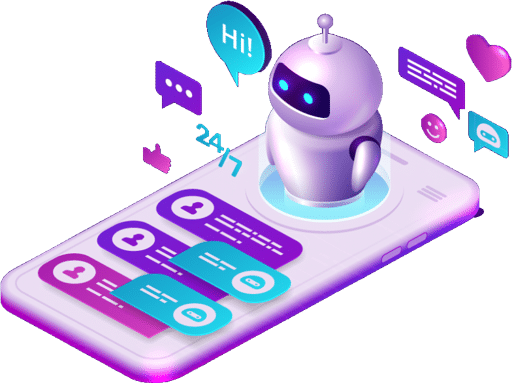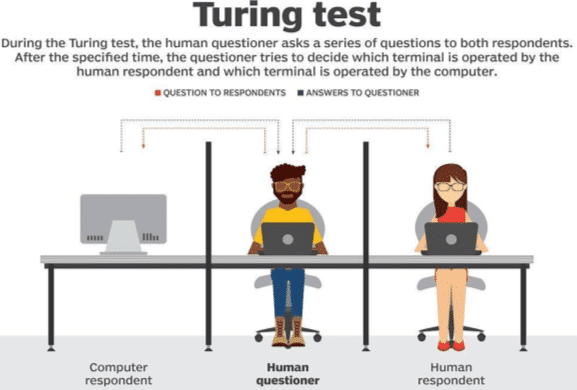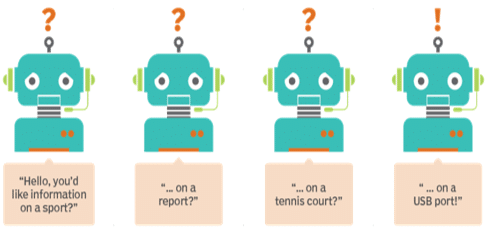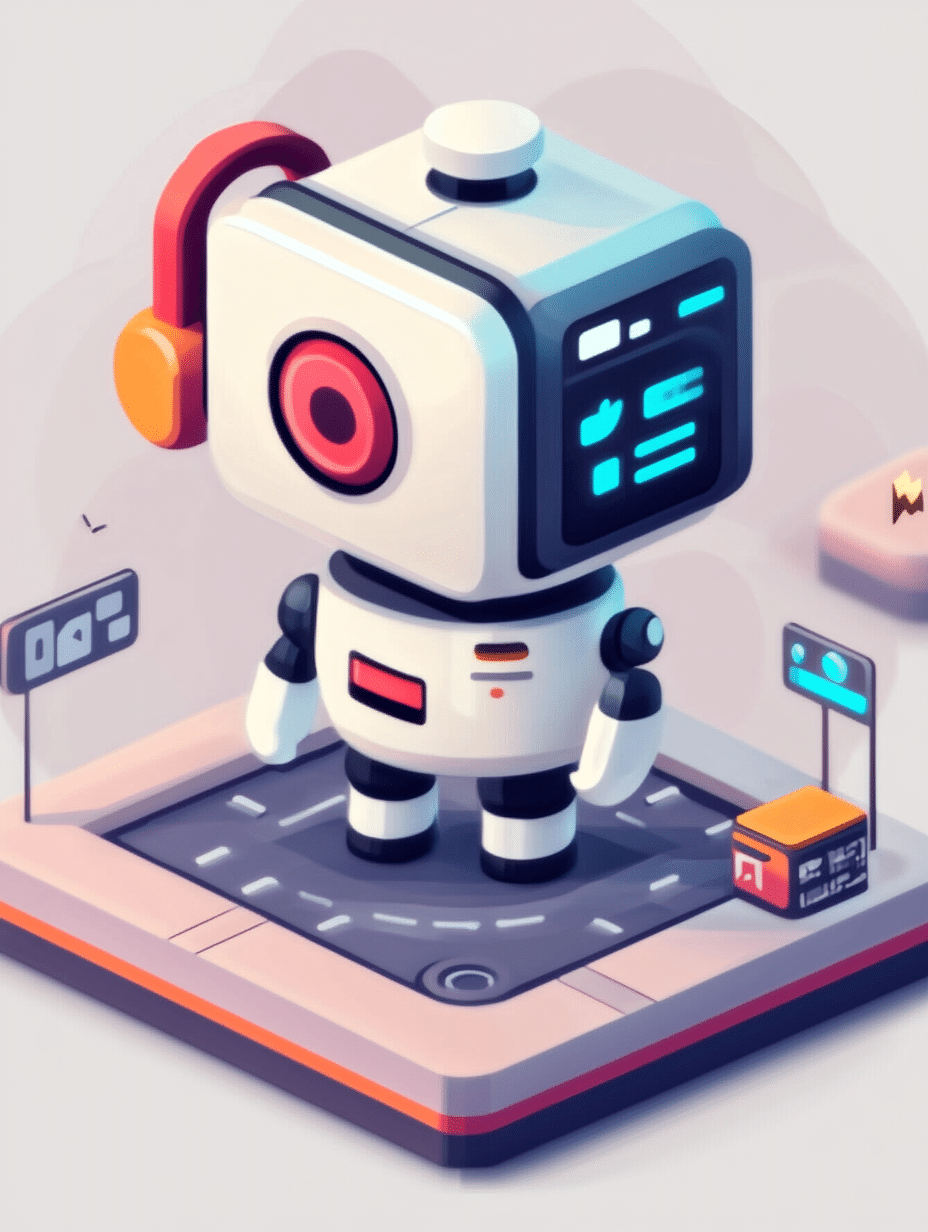Are you a contact center leader or manager wondering if AI is about to replace your human agents? According to guest writer L.J. Rogers from Aria Consulting, the short answer is no—or at least, not yet.
The post explores the research, insights, and real-world rationale behind why AI won’t be taking over your contact center any time soon. More importantly, it shares how intelligent automation and human expertise can go hand in hand to transform your operations.
Whether you’re just beginning to consider AI or already experimenting with new technologies, the introduction aims to set the stage for navigating the road ahead and making smart decisions about the future of your contact center. Topics covered include:
- How Al chatbots augment humans in contact centers
- Tips for designing and testing your AI chatbot
- Where & how AI chatbots fit into customer support
(Note: If you like the post and want the full slide deck to go along it, scroll down and grab a copy)
Chatbots Are On The Rise
Gartner Group has estimated that by 2027, 65% of customer service and support operations will integrate AI customer assistants or AI chatbot tech across their engagement channels.
Although there are some kinks to work out, AI chatbots can augment what humans do, especially with the rapidly improving anthropomorphism (human-like qualities & personalities) of the leading AI services (ex. ChatGPT, Gemini, Copilot, etc.).

As AI (Artificial Intelligence) gets swiftly more sophisticated, organizations are trying to integrate the technology into contact centers in the form of Al chatbots. Al has already evolved to where it can handle simple customer requests. But experts caution that if you're wondering whether Al is ready to replace humans in contact centers, the answer is no -- or at least, not yet.
Before deploying any AI, experts recommend thorough testing to ensure that the technology works as intended. The current state of the technology allows organizations to confidently use Al chatbots for simple to moderate complexity questions from users.
This can free up humans for complex requests that require judgement calls that even the most capable AI’s currently can’t emulate, according to Shep Hyken, a customer service and experience expert and chief amazement officer at Shepard Presentations.
Introducing the technology into the contact center on the basis of assisting human agents to increase customer experience is the right word to describe the most common current scenario, he says. The question then is, how long before the technology reaches a level of maturity for a wide range of companies to replace humans altogether?
Organizations globally are rushing to try to quickly deploy Al chatbots to support/assist staff in helping customers, Hyken says. The AI listens in to the conversation the human agent is having and feeds information to the agent, but currently, the humans still make the decisions as to what to relay to the customer. This approach allows the human rep to match customer info (profiles, buying patterns, etc.) and make informed suggestions for upselling or anticipating support needs.
But at the breakneck speed that the AI chatbots are improving most call centers are going to need to answer this foundational question in the near future.
AI Chatbots are not a panacea!
Like other technologies, AI chatbots can influence many aspects of delivering customer service, from the types of interactions to routing methodology, according to Brad Cleveland, senior adviser and former CEO of the International Customer Management Institute.
"A common mistake we see is assessing these new capabilities in a vacuum, not considering how they shift workloads, impact agent skill requirements or influence customer behavior,"
While the most common goal of AI chatbots is to make customer service easy on both sides, the biggest con of Al chatbots isn't actually because of the AI chatbots themselves, Cleveland says.
"It's expecting them to be a silver bullet for staff reductions or service improvements. There's no technology that can be 'the answer' to a better customer experience in the absence of effective strategy and planning,"
Cleveland also notes that AI chatbots can frustrate customers to the point of anger if they aren't offering the help needed. It is notable that AI chatbots can frustrate customers to the point of anger if they aren’t offering the help needed.
Also, there are some things AI chatbots aren’t allowed to do due to regulatory requirements. A good example of this is quoting a mortgage rate or handling certain types of monetary transactions. However, this too is subject to change as AI continues its meteoric rise.

AGI and Turing’s Test
But where is AI rising to? Consensus amongst many practitioners and analysts is that AGI, or Artificial General Intelligence, is the target end-state. So, what is AGI? Well, it’s ‘the hypothetical ability of an AI to understand, learn, and apply knowledge across a wide range of tasks, comparable to or exceeding human cognitive abilities.

That last part is key. One of the chief ways AI researchers use to determine if an AI chatbot model could be AGI is through variations of the “Turing Test”. The intent of this test, established by Alan Turing, is to provide a double-blind comparison between an AI chatbot response versus a human response, often from a Subject Matter Expert (SME), to determine if the AI’s response is distinguishable from the human response.
But the Turing Test, while foundational, is not a definitive measure of AGI. Researchers know that they need to go beyond surface-level responses and focus on an AI’s ability to reason, adapt, and autonomously improve. True AGI wouldn’t just mimic human answers — it would demonstrate
an understanding of context, handle novel situations, and even exhibit creativity or intuition. The challenge, then, is not just making AI sound intelligent, but ensuring it genuinely comprehends and engages with the world like a human would.
Ensuring Al chatbots deliver customer service
The biggest mistake some organizations are making right now with their custom implementations of leading AI services (ex. Microsoft Copilot, Google Gemini Gems, Amazon Connect, etc.) is releasing AI chatbots into production too soon, according to Hyken. Solid testing is critical to ensure readiness.
Additionally, automating the contact center with Al and chatbots requires constant maintenance, learning and adjustments to keep up with customer expectations.
"The knowledge of how intents and dialogues work in an AI chatbot environment [is] required," Matt Grofsky, CTO of communications software maker Ytel.
This often translates to additional development and maintenance costs for talent with Al and development experience.

The global community has seen AI chatbot’s capabilities grow by leaps and bounds over the last 2-3 years. For now though, they’re still likely best used to supplement what human contact center agents do, such as responding to specific support needs, and fulfilling routine requests like address changes or quoting shipping costs, thus facilitating humans to handle complex service needs.
Organizations just need to ensure their Al chatbots are thoroughly tested and ready to use with the public before deploying them.
Designing AI chatbots with personality-plus and “the gift of gab”
AI Chatbots may seem to represent the ultimate answer, but they don't get “smart” all on their own. Well, not yet at least!
Designing AI chatbots that are both informative and persuasive means having a clear goal of what your AI agent should convey to your customers about your organization. And how. Getting to that point will take time, patience and an understanding of the nuances of how the AI functions. It also requires a close working relationship with a good AI developer.
"It's a new medium. The answers are not obvious and it's not instant, you have to do some trial and error.“ Beerud Sheth, CEO and co-founder of chatbot platform Gupshup.
Want The Slides To Go With This Post?
No organization has yet rolled out a ‘perfect’ AI chatbot. Like humans, chatbots misinterpret typed and spoken words -- and make mistakes. As all of the major Chatbots state in their chat interfaces.
Being prepared for that kind of potential setback is one of the first things your organization should realize when working with a AI Chatbot developer.
Andy Peart, former chief marketing and strategy officer for the AI platform Teneo finishes with the point:
"We don't go for the moon. We don't encourage that!"
Treat it like it’s human
When designing an AI chatbot, don't expect it to provide much value if you want to use it for the sake of showing off how forward thinking your organization is. Have a firm idea of how it will be used and why. Plan for its role just as you would your human staff. Most Gupshup clients, for example, want their prospective AI chatbot to help customer growth, followed by sales enhancement, and then customer support, Sheth says.
Once you map out the AI chatbot's duties (similar to a job description), you'll need to select a team that will work with the developer from design through implementation and onto managing and monitoring the AI chatbot’s use. AI Chatbots are NOT a “Fire & Forget” proposition!

"We do not need technical or linguistic experts on that team. Rather, they should be people with a deep knowledge of the business," Mariana Martinez Piervittori, former content and marketing specialist for virtual assistant platform Aivo.
A business-centered team, as opposed to IT, will likely be best-suited for answering critical questions that will align the chatbot to its intended audience, Martinez explains. Those questions should include:
- Who is your buyer?
- Why do they buy?
- What do they buy?
- What help do they typically need?
Beyond strategic planning, organizations should also consider how AI chatbots evolve through interactions. Just as human staff refine their communication skills over time, chatbots improve their language comprehension with each conversation. By engaging users in natural dialogue and learning from responses (“Reinforcement Learning”), they can expand their vocabulary, recognize intent more accurately (ex. “…on a USB port!”), and become more effective over time. This ongoing adaptation is why treating them as a dynamic part of your team — rather than a static tool — is critical to their success.
Brand and personality
Most organizations have a defined image, color, logo, and sometimes an avatar in mind when designing AI chatbots, Martinez says, adding that design, tone, language and vocabulary can shape a persona for your AI chatbot. While the AI chatbot's personality should align with the company’s image, AI chatbots also can be designed to fit the persona of the target customer audience(s).
Gupshup, for example, created an AI chatbot for Wrigley's Skittles candy that mimicked the colorful and fun marketing messaging of Skittles. "It takes a lot of brainstorming," Sheth says. "It's critical that the personality comes through. The brand owner has to be involved in the process."
For the website All About Jazz, the persona of its Chetty. AI chatbot “AAJ” tries to align with the wide perspectives of the readership. Newcomers may type basic questions about jazz -- inquiries about an artist or a concert date for example -- while longtime fans might issue queries about an album's liner notes. The trick is to have the AI chatbot's personality reveal itself in language, with words and phrasings that don't turn off users.

The collab365 team have done the same with their helper bot called "Dot"
The words an AI chatbot uses to communicate and the words they are trained to understand need to be worked out between client and designer before they're implemented into the software. This might be the most difficult and time-consuming phase of development. After all, an AI chatbot is supposed to "chat," whether it's verbally or through typed messages via web, text or social media channels.
AI chatbot conversation is governed in one of two ways: structured and unstructured. Structured conversation has the AI chatbot putting a gate around a chat by using specific words so that the human at the other end, with limited choices, won't drift far. The AI chatbot can display responses with (often) deep links to lead users directly to what the AI has determined they (probability based) want.
"When you do a structured conversation, there is less chance for misunderstanding," Gupshup's Sheth states. A structured conversation, he adds, can be crafted in more than 200 languages "very easily."
If your company wants to produce a “chattier” AI chatbot, it may have to work without specific language parameters. The AI chatbot's responses will come from a repository of phrasings that are mapped to the words expected from users. It takes years of conversations for humans to achieve deeply fluent understanding, and even that is not always guaranteed because of a misplaced word or an unusual idiom.
Artificial Solutions' Peart also warns clients not to get their expectations too high. The meteoric growth curve AI chatbot developers like OpenAI, Microsoft, Google, Perplexity, and others have demonstrated thus far is leading some organizations, for example Salesforce who’s CEO Marc Benioff said in a conversation with venture capital specialist Harry Stebbings in December 2024 that Salesforce plans to not hire any new software developers in 2025 due to significant productivity gains achieved through the implementation of AI tools like "Agentforce“, to believe AI chatbot technology is the ultimate ‘silver bullet’. Which may be…..premature.
Pavlov’s dogs
When designing AI chatbots, don't leave them hanging in the wind when they fail to understand human prompts. Using analytics, AI chatbots can be tuned to vocabulary outside their usual repertoire as they're gaining experience in conversations.
"Customers might not be happy with answers even though it's working well, Companies can mine that data. They can see when people are getting annoyed and what caused it. You can fine-tune that." Peart
AI chatbots will continue to learn from their mistakes, in ways similar to how Pavlov trained dogs, because they don't appear to be going away anytime soon.

Being able to engage customers on a basic level and cut the costs of human representatives, AI chatbots are positioned to become an even bigger part of CRM.
Gartner has estimated that 45% of customer service and support operations will integrate virtual customer assistant/AI chatbot technology across multiple engagement channels. Surveys have shown people increasingly expect to speak to devices in human ways, and soon, the expectation will likely be that every enterprise has one.
Separating AI Chatbot hype from reality
"Let me speak to a REAL agent!"
Most of us have probably yelled that in exasperation into the phone, trying to cut through an automated phone system to try to get to talk to a human.
The formal name for an automated phone system is Interactive Voice Response or IVR. These are 1980’s-era precursors to customer service AI chatbots. IVRs do create efficiencies for both call centers and the customers they serve. In many organizations, they can route requests to teams with specialized expertise and, in some cases -- such as checking a bank account balance or receiving flight status updates -- they may offer quicker self-service than human agents.
But it tends to increase customer anxiety when the voice recognition is off or if your voice is ranging two octaves higher than normal because (for example) it's the 19th call you’ve put into the credit card company {AHEM}, because a problem hasn't been resolved. Or you somehow got lost in the labyrinth of selections and can't find your way out and that human representative never gets connected.
In those exasperating instances, an IVR may represent many things – poorly -- the company, the brand, the pathetic customer service it engenders, and even a lack of regard for the customer's time and whatever concern it was that led them there in the first place.
IVRs can represent an excuse to find a competing company with which to do business. Customer service AI chatbots are replacing IVRs as customers transact and do more service-seeking online. When they waste customer’s time and patience, bots increasingly invoke the same flight instincts that IVRs do.
Here come the AI Chatbots

Customer service AI chatbots can represent your brand with smiling faces, logos, snappy dialogue and even emojis through web, phone, social media and text channels. Vendors want you to believe their capabilities are almost limitless.
However, just like with IVRs, customers may have a hard time trusting these AI bots to solve their problems, if they find their query is too complex for the AI chatbot to make them happy. That is, except when the problem can be solved with a simple answer, such as finding the URL for an instructional PDF or checking a package's shipping status.
Dealing with an AI chatbot may feel like those 1980’s computer text adventure games (anyone remember Zork?). But it's a lot more fun trying to solve a Zork type puzzle when it's for fun and the win doesn't involve getting an incorrect charge wiped off a credit card bill!
Many call center leaders aren’t yet ready to trust the good ratings their human agents earn every day to insufficient AI bot-proxies.
Interestingly, these same pros often express admiration for customer service chatbot technology and speak of its potential to solve customer problems -- at other companies' call centers; not at their own. Companies that think they will save money and bandwidth with customer service chatbots because that's becoming standard might be making a bad bet. There's still considerable room for improvement as this is a young technology still very much growing up. Underlying technologies like natural language processing and Al will continue to evolve, making bots a sharper as time goes on. But, for now, don't believe the vendor hype.
Consumer surveys reflects unhappy resignation
Turns out there is already established distaste for automated customer service. Whether it's via IVR, customer service AI Chatbots or even live chat -- in which humans paste in canned answers that are oftentimes as unhelpful as they are upsetting -- as we try to steer the discussion back to the original problem that prompted the service contact.
The situation is so bad, according to 1,000 U.S. adults who responded to a survey conducted by Helpshift, that customers would rather scrub a toilet, go to the dentist or sit in traffic than call customer service! Why? Long wait and hold times, having to repeat the problem after being transferred, and language breakdowns with offshore call centers.
So why do people want AI chatbots at all? Is it because of resignation or desensitization to low-touch self-service, kind of like how many people now bag their own groceries at the grocery store self-checkout because the lines with human cashiers back up too long (at least that’s the supermarket industry’s theory)?
One of the questions on a survey, "why would you continue talking with an AI chatbot?“, sought to understand this.
About 1/3 of respondents (318) indicated that they believe “it's the only way to get help” in a close 2nd place to “would not continue conversing at all” (333). 3rd place, however, was 316 respondents who said their problems were simple enough to solve that it was worth continuing dialogue with a bot.
Humorously, responses to the question under the ‘other’ option, with a free-text field to enter their own reasons, included :
The moral of the story for vendors and call center executives
For AI chatbot vendors, Helpshift's survey should be instructive (at least). It’s a classic case where it’s better to under-promise (and hopefully over-deliver!) because consumers don't necessarily want to be routed through your technologies. Over-promising and under-delivering will (not too surprisingly) get your chatbots unplugged faster than you can say "customer retention has evaporated."
For customer service leaders at companies who are reticent to invest in and implement AI chatbots in their call streams, well, the survey looks like validation -- at least until the technology evolves to tackle complex customer issues. Complex being defined in this context as scenarios that require human judgement calls (ex. factoring organization/team politics). Creating a Coca-Cola TV commercial with AI is NOT the same level of complexity as knowing (for instance) that your new Director really dislikes issuing refunds. But not to the point they are willing to defy executive expectations. Human agent stands a chance in that context. AI chatbot does not.
Customers often aren't excited to talk to your call center human agents in the first place. They're calling because they have a problem, and they likely aren't in the sunniest mood to begin with. Keep that in mind when considering customer service AI chatbot setups. Because when your bot represents you poorly, it might not do much to assuage those bad customer moods and build the positive customer experience we all want.
Grab yourself a complementary copy of the slides this post came from
Want To Discuss AI In Your Organisation?
Aria Consulting can help you. With a wealth of experience and a proven approach to engagement, Aria is here to be your AI safety net
Insurance must adapt to tech trends
According to Jon Chasteen, a former partner at insurance agency management company In-Fi, adopting Al is the direction the insurance industry needs to move. Too often, insurance companies follow old ways of doing things, which often involve pushing a lot of data gathering onto customers.
But people are doing things in other areas of their lives in new ways. Al technology is increasingly automating how people discover new products, get directions to places and manage their email inboxes.
Like other organizations, insurance providers need to adopt similar approaches in order to stay relevant in this world, Chasteen says.

"We've got to recognize that the world is changing, people will buy things differently."
At the same time, Chasteen says he's cognizant of the perceived need to keep humans in the loop. Selecting homeowner insurance can be a complicated process, and today’s AI chatbots aren’t always up to the task. They aren't yet able to handle every question or concern that a customer might deal with during the process.
In-Fi still keeps a team of human agents on hand to deal with more complex issues that may arise during the process. The AI chatbot primarily helps with more routine interaction. This combo of Al-powered technology handling some tasks and humans the most complicated jobs is a good approach given where the technology is today, Chasteen says.
"We're not trying to remove the human element from buying a complex financial product," he states. "We're trying to get to a place quicker where someone can have a good understanding of their options and have a more meaningful conversation."
